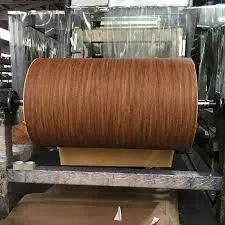- Home
- Duplex Board Specifications and Product Details for Optimal Performance and Quality
Nov . 01, 2024 19:16 Back to list
Duplex Board Specifications and Product Details for Optimal Performance and Quality
Understanding Duplex Board Specification A Comprehensive Overview
Duplex board, often referred to as duplex board paper, is a type of paperboard characterized by its distinctive structure and versatility in various applications. Commonly used in packaging, printing, and other industrial applications, duplex board has become an essential product in the paper industry. Understanding its specifications can help you make informed decisions whether you're a manufacturer, supplier, or end-user.
Composition and Structure
Duplex board is primarily made from recycled paper fibers, which are derived from post-consumer waste. This composition makes it a sustainable option in the world of packaging materials. The most notable feature of duplex board is its two-sided nature one side is usually coated, providing a smooth and bright surface that is ideal for printing, while the reverse side typically has a more textured finish. This duality allows duplex board to cater to a wide range of uses, from high-quality printed packaging to simple structural applications.
Specifications
When assessing duplex board specifications, several key factors come into play
1. Grammage (GSM) The weight of the duplex board is an essential specification. It is typically measured in grams per square meter (GSM). Duplex boards can range from around 200 GSM to over 400 GSM, with thicker boards providing additional strength and rigidity. Heavier board is preferred for higher-end packaging solutions, while lighter varieties may be utilized for internal packaging or as a cost-effective alternative.
duplex board specification product

2. Thickness Alongside grammage, the thickness of duplex board plays a crucial role in its application. The thickness can affect the board's durability, printability, and overall performance. Most duplex boards fall between 0.5mm and 1.5mm in thickness, depending on the intended use.
3. Brightness Brightness levels impact print quality significantly. A brighter board is suitable for vibrant printing needs, allowing colors to stand out and ensuring that graphics printed on the surface appear sharp and clear. Duplex boards typically boast brightness levels ranging from 70% to 95%, depending on the coating applied.
4. Opacity Opacity determines the degree to which light passes through the material. A high opacity value is crucial for packaging applications where visibility from one side to the other can hinder the presentation. Duplex boards generally offer high opacity, making them suitable for printed boxes and other packaging solutions.
5. Printability Due to its coated surface, duplex board is highly suitable for various printing processes, including offset, flexography, and digital printing. Its ability to accept inks well makes it a popular choice for product packaging and visual merchandising.
Applications
Duplex board finds extensive use across many industries, including food and beverage packaging, cosmetics, pharmaceuticals, and more. It is commonly used to create boxes, cartons, and displays, offering a balance of cost-effectiveness and quality that appeals to manufacturers and consumers alike.
In conclusion, the duplex board is a vital component in the realm of packaging and printing, hailed for its sustainability, versatility, and print-ready qualities. By understanding its specifications—including grammage, thickness, brightness, opacity, and printability—stakeholders can effectively leverage duplex board to meet their specific needs and enhance their products' appeal.
Latest news
-
High-Quality Bathroom Cabinet Contact Paper – Durable & Stylish Leading Suppliers, Exporters, Manufacturers
NewsJul.08,2025
-
Premium Wood Contact Paper for Desk – Reliable Suppliers & Exporters
NewsJul.08,2025
-
Premium Contact Paper for Table Top – Durable & Stylish Surface Solution from Leading Manufacturer
NewsJul.07,2025
-
Duplex Board with Grey Back - Reliable Supplier & Competitive Price Manufacturer & Exporter
NewsJul.07,2025
-
Premium White Contact Paper on Cabinets – Trusted Exporters & Suppliers
NewsJul.06,2025
-
High-Quality Duplex Board Packaging for Food Reliable Manufacturer & Supplier
NewsJul.06,2025

